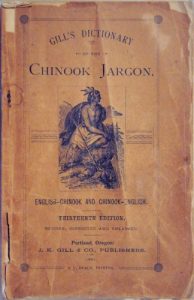By Sarah-Claire Jordan
 As a country populated by immigrants, the U.S. has become home for people from a diverse array of cultural and ethnic backgrounds. Even before colonization by any European power, it was populated by over 500 different Native American tribes, who in turn influenced the culture and language of the settlers in their areas. The introduction of African slaves and the annexation of lands such as Louisiana and, much later, Hawaii, added to this rich diversity.
As a country populated by immigrants, the U.S. has become home for people from a diverse array of cultural and ethnic backgrounds. Even before colonization by any European power, it was populated by over 500 different Native American tribes, who in turn influenced the culture and language of the settlers in their areas. The introduction of African slaves and the annexation of lands such as Louisiana and, much later, Hawaii, added to this rich diversity.
Sometimes, when an area is settled by a group that doesn’t speak the native language, a basic language called a pidgin forms. This in turn can become a creole, or a stable language spoken as a native tongue. There are actually a handful of creole languages that developed in the U.S.
1. Chinook Jargon
Also called “Chinuk Wawa”, this language was originally a pidgin language based on the Chinook Native American language. It began to develop when the first European settlers arrived in the Pacific Northwest and needed to interact with speakers of Chinookan and Wakashan indigenous languages. It spread and was used as a trade language, eventually becoming a creole in Oregon. It has influenced the English spoken in the area, with a few words sticking in the U.S. English lexicon, most notably “muckamuck”.
2. Gullah
Gullah is a creole based on English and heavily influenced by West African and Central African languages. It developed in the Sea Islands off the coast of Georgia and South Carolina, as well as the coasts themselves. It may have been influenced by Guinea Coast Creole English, but not all linguists agree about that. Gullah is spoken by the Gullah people and some words made their way into English, like “goober”.
3. Louisiana Creole French
After the French and Indian War, French settlers were essentially kicked out of French Canada and Acadia as England gained control of that area. Some of these French speakers, known as Acadians, ended up settling in Louisiana, which soon was populated by slaves brought over from parts of Africa. The native languages of the slaves eventually mixed with the French already spoken in Louisiana, and Louisiana Creole French was born.
4. Hawai’i Creole English
The origins of Hawai’i Creole English, also confusingly called Hawaiian Pidgin (it is not a pidgin), are in the sugar plantations where native Hawaiians and immigrants worked. The plantation owners spoke English, but most of the workers spoke Hawaiian, Portuguese, Cantonese, and other languages. All of these influenced the English-based creole that was used to communicate on the plantations. Nowadays, the language carries a strong stigma in formal settings and is only used on an informal level, like between neighbors or family members. Still, it is considered by many to be the language of Hawaii, even though the island state has two official languages: Hawaiian and English.
Though there aren’t very many creoles spoken in the U.S. compared to the number of languages spoken in the whole country, they certainly add to the richness of the linguistic diversity of the country.



